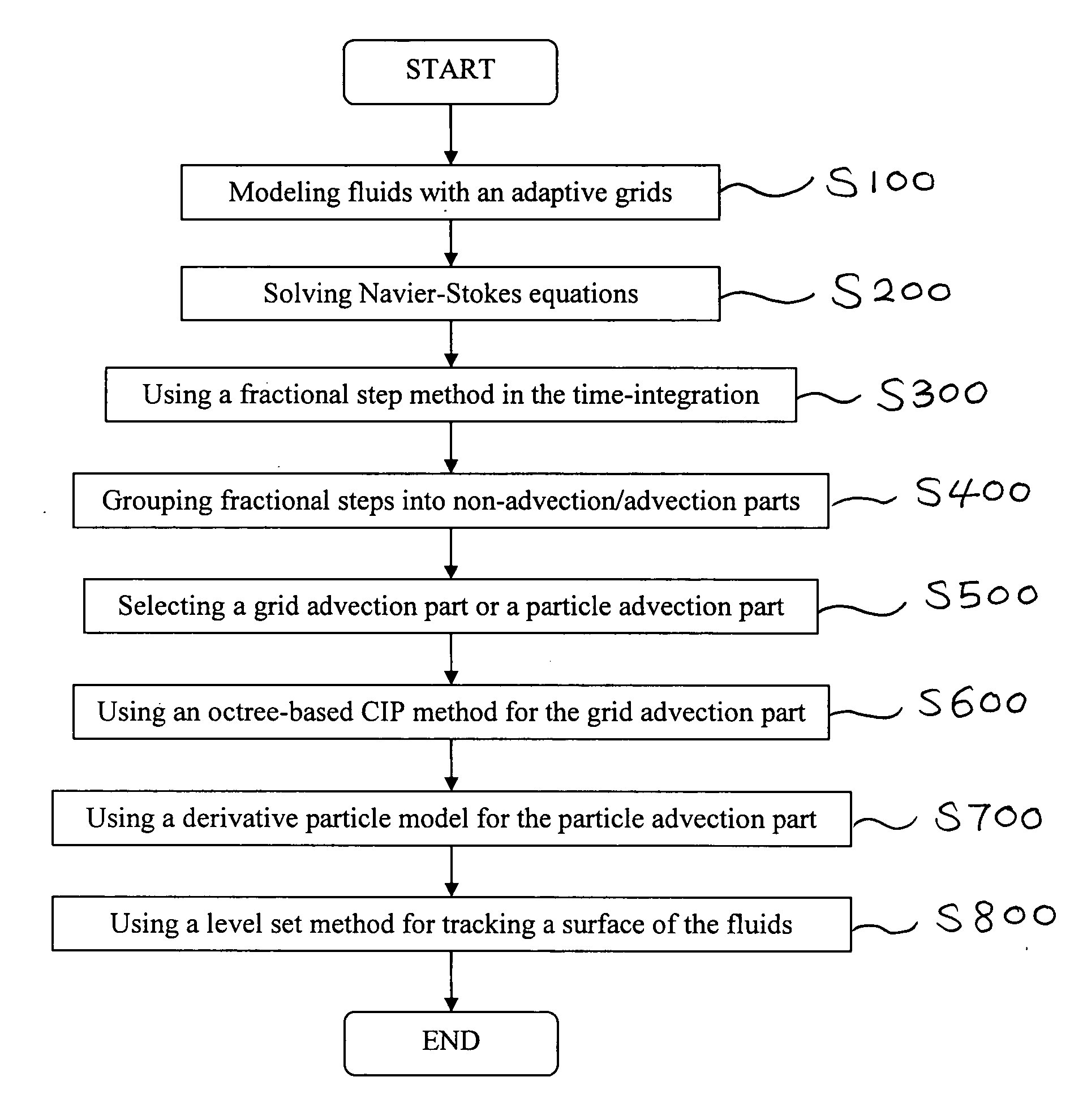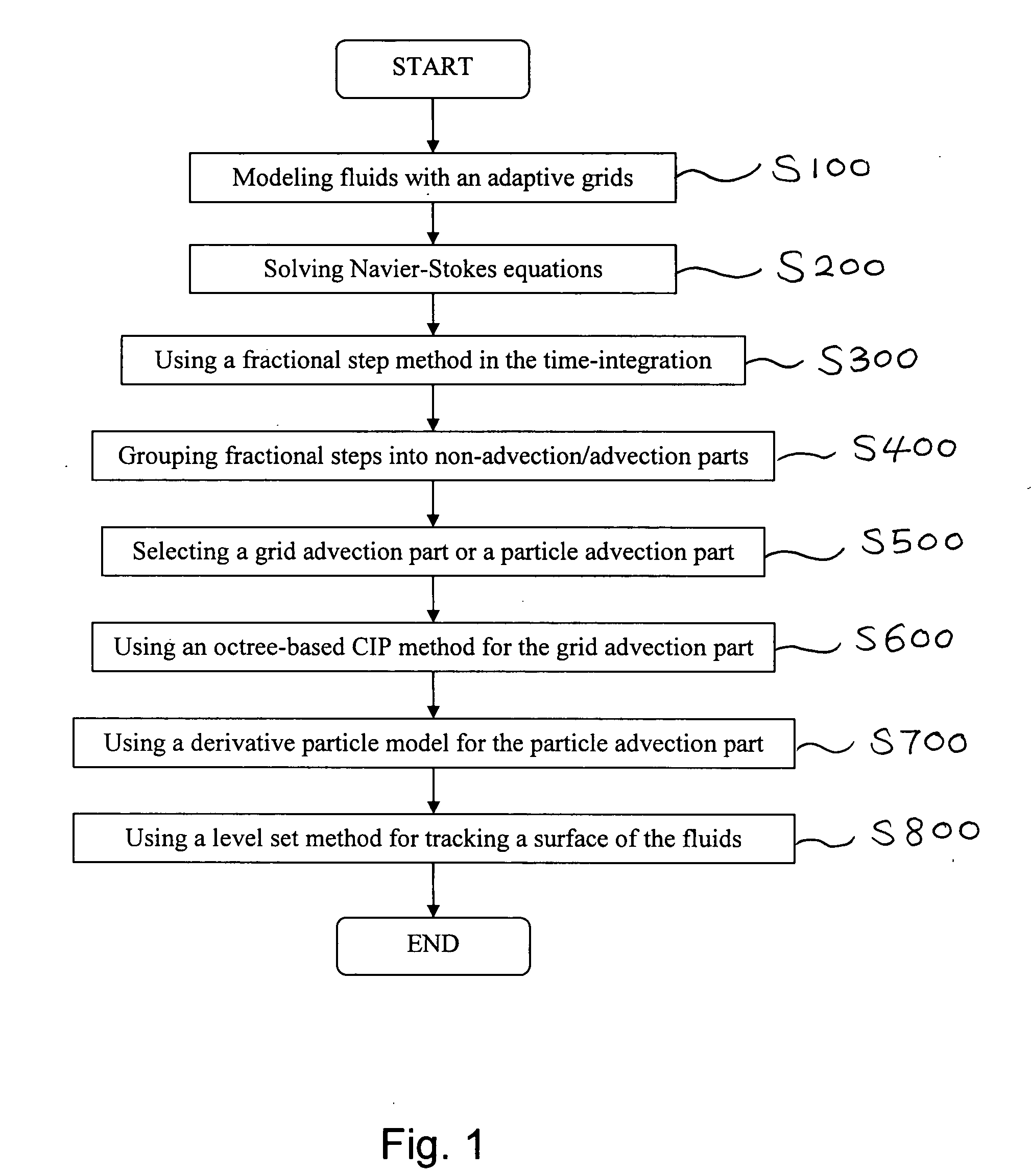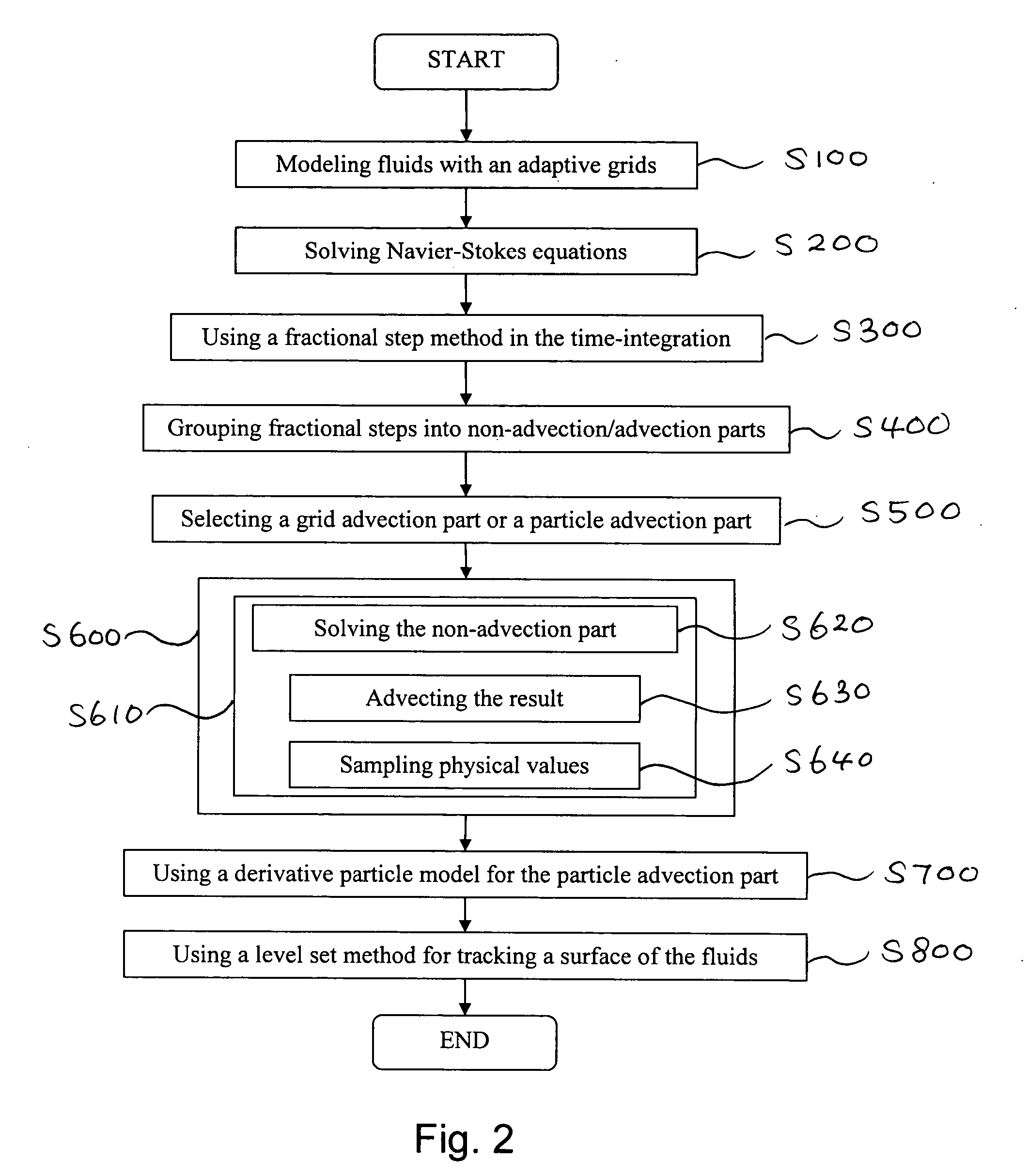Method of simulating detailed movements of fluids using derivative particles
- Summary
- Abstract
- Description
- Claims
- Application Information
AI Technical Summary
Benefits of technology
Problems solved by technology
Method used
Image
Examples
Embodiment Construction
4 Developing the Octree-based CIP Solver
[0055] This section describes the development of the grid advection part of the simulator by combining the CIP method with the octree data structure.
4.1 Introduction to the CIP Method
[0056] In solving the Navier-Stokes equations with the fractional step method (Section 3), the advection terms u·∇u and u·∇φ require special attention due to their hyperbolic nature. The semi-Lagrangian method provides a stable framework within which to handle the above hyperbolic equations (Stam 1999]. Unfortunately, however, this method suffers from severe numerical diffusion arising from the linear interpolation that is used to determine the physical quantities at the backtracked non-grid point from those at neighboring grid points.
[0057] Meanwhile, the CIP method is a third-order technique originally proposed by Yabe and Aoki [1991a; 1991b] and subsequently improved by Yabe et al. [2001]. The key idea of this method is to advect not only the physical qua...
PUM
 Login to View More
Login to View More Abstract
Description
Claims
Application Information
 Login to View More
Login to View More - R&D
- Intellectual Property
- Life Sciences
- Materials
- Tech Scout
- Unparalleled Data Quality
- Higher Quality Content
- 60% Fewer Hallucinations
Browse by: Latest US Patents, China's latest patents, Technical Efficacy Thesaurus, Application Domain, Technology Topic, Popular Technical Reports.
© 2025 PatSnap. All rights reserved.Legal|Privacy policy|Modern Slavery Act Transparency Statement|Sitemap|About US| Contact US: help@patsnap.com



